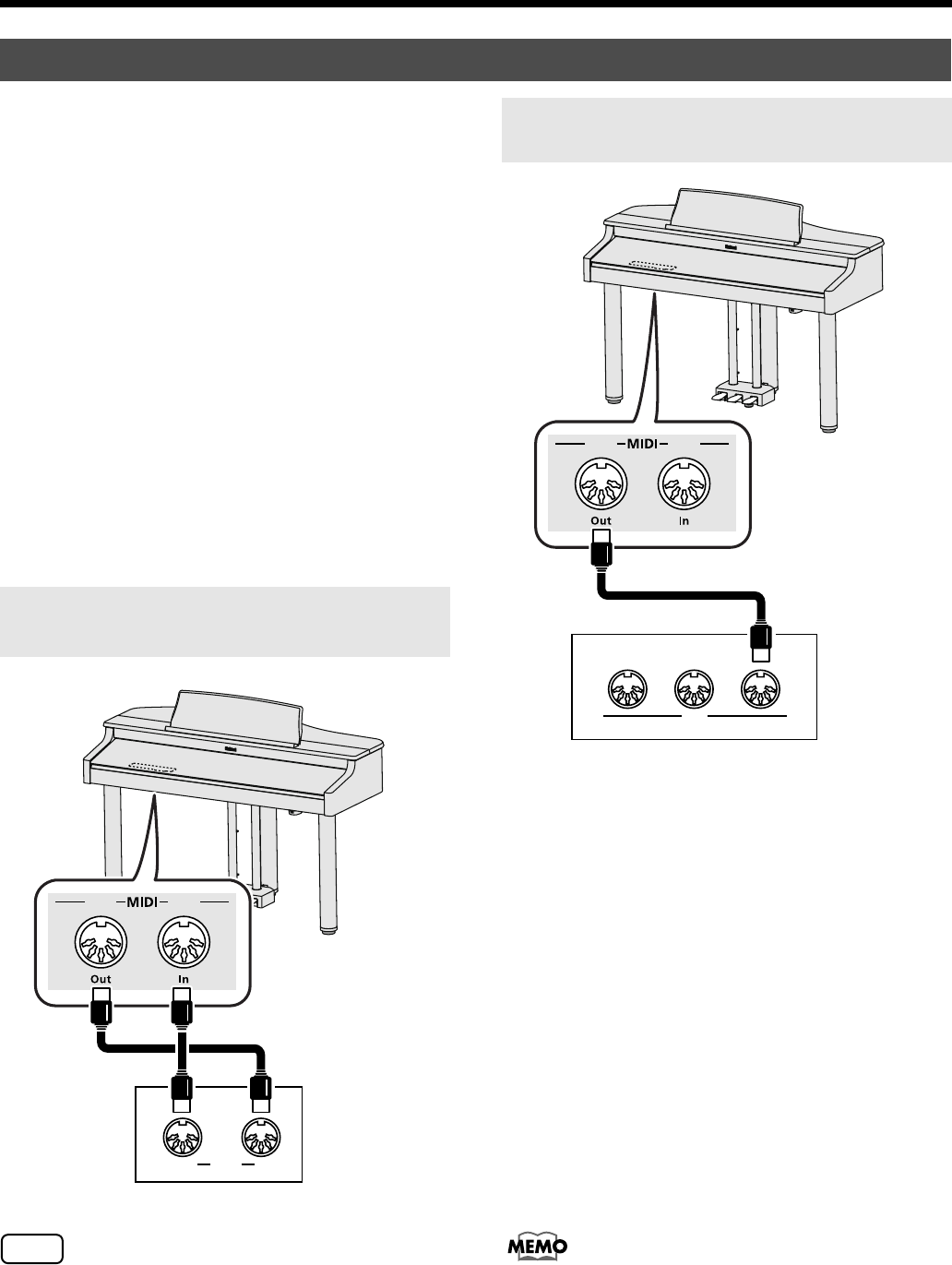
81
Connecting External Devices
By connecting an external MIDI device and exchanging
performance data, you can control one device from the other.
For instance, you can output sound from the other
instrument or switch Tones on the other instrument.
* External MIDI devices can’t be used for remotely changing the
Tones played by the RG-1’s keyboard.
What's MIDI?
MIDI, short for “Musical Instrument Digital Interface,” was
developed as a universal standard for the exchange of
performance data between electronic instruments and
computers.
The RG-1 is equipped with MIDI connectors to let it
exchange performance data with external devices. These
connectors can be used to connect the RG-1 to an external
device for even greater versatility.
* To prevent malfunction and/or damage to speakers or other
devices, always turn down the volume, and turn off the power
on all devices before making any connections.
NOTE
When the RG-1 is connected to a MIDI sequencer, set it
to “Local Off.” Refer to “Preventing Doubled Notes
When Connected to a Sequencer (Local Control)” (p. 73).
Making the Connection
1.
Turn the volume all the way down on the RG-1
and on the MIDI device you’re about to connect.
2.
Switch off the power to the RG-1 and the MIDI
device you’re about to connect.
3.
Use a MIDI cables (sold separately) to connect the
MIDI connectors to each other.
4.
Switch on the power to the RG-1 and the
connected device.
5.
Adjust the volume level on the RG-1 and the
connected device.
6.
You should also set the MIDI transmit channel as
needed.
For details on the MIDI transmit channel, refer to “MIDI
Transmit Channel Settings” (p. 72).
Connecting to MIDI Devices
Connecting a MIDI Sequencer to
the RG-1
OUT
MIDI
IN
Roland MT series
Producing Sounds from a MIDI
Sound Module by Playing the RG-1
THRU OUT
MIDI
IN
MIDI Sound Module
RG-1_e.book 81 ページ 2008年4月8日 火曜日 午後2時36分


















